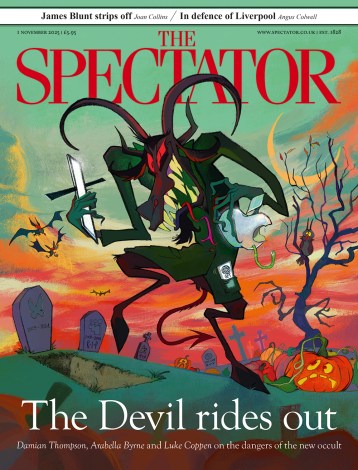How did Alexei Navalny die? The official version is that he collapsed after a walk in his Siberian prison. But his family are, like much of the world, sceptical – and have shared what they have been told so far. His mother and lawyer were originally told his body had been taken to the morgue at Salekhard, a town some 30 miles from the ‘Polar Wolf’ colony where he had been imprisoned. Upon arriving there, they found the morgue shut; when they finally got in touch with staff there they were told Navalny’s body was not in fact there.
It appears the prison authorities have also deliberately been spreading confusion about Navalny’s cause of death. Despite early rumours suggesting he had died from an unspecified ‘detached blood clot’, Navalny’s mother were told he had in fact died of ‘sudden death syndrome’. A condition which seems to afflict many of Putin’s critics.
It will likely take days, if not weeks, for Navalny’s body to be released to his family
Another of Navalny’s lawyers was told the cause of his death ‘was yet to be established’ and that further examination of his body would be conducted. The results will supposedly be released next week. ‘It is obvious they are lying and are doing everything they can not to release the body,’ she has written on X/Twitter. Soon afterwards she confirmed that the investigative committee supposedly looking into his death had said that Navalny’s body would not be handed over to his family until the official investigation was complete. Speaking to the independent Russian-language TV channel Dozhd, she called his death a ‘planned murder’. Navalny’s team are still unable to confirm where exactly his body is now located.
Meanwhile, independent investigative journalists have already begun attempting to piece together the final moments of Navalny’s life. The online Russian-language publication Mediazona has managed to establish that Navalny most likely went for his walk, directly after which he is supposed to have taken ill according to the prison authorities, at around 6:30 a.m. They make the point that according to the authorities he died at 2:17 p.m. local time – nearly eight hours later.
Reporting by the anti-Kremlin Latvia-based newspaper Novaya Gazeta implies, however, that Navalny’s death may have occurred much earlier in the day, or even the night before. They cite a source within the Polar Wolf prison colony who claims that on the evening of 15 February, the night before Navalny died, a hubbub began to brew in the colony. The evening roll call at 8 p.m. was rushed through before prisoners were all locked away in their barracks. They were allegedly forbidden from moving between barracks and security patrols were enhanced. News of Navalny’s death apparently spread through the colony at 10 a.m. local time on the morning of 16 February. The source claims that around the same time that news of his death spread, a commission from the prison service’s headquarters arrived at the colony, implying they had advanced knowledge that he had already died.
It will likely take days, if not weeks, for Navalny’s body to be released to his family. They will certainly look to conduct their own independent post mortem – it is only then that we are likely to get a reliable picture of what he went through in his final hours.
Meanwhile, the news of his death continues to send shockwaves around Russia. The media has downplayed the story (as I wrote earlier) but nearly 360 people have been detained at rallies held in memory of Navalny in 32 cities, including Moscow and St Petersburg, according to OVD-info. This marks the largest protest movement to occur in Russia since the announcement of the ‘partial mobilisation’ of the Russian army in September 2022. The human rights monitoring group says that among those detained are people arrested simply for laying flowers at memorials to the Kremlin critic – three such people in Moscow have already been handed 15-day jail sentences for doing exactly this.
We will bring you more as it comes in.







Comments